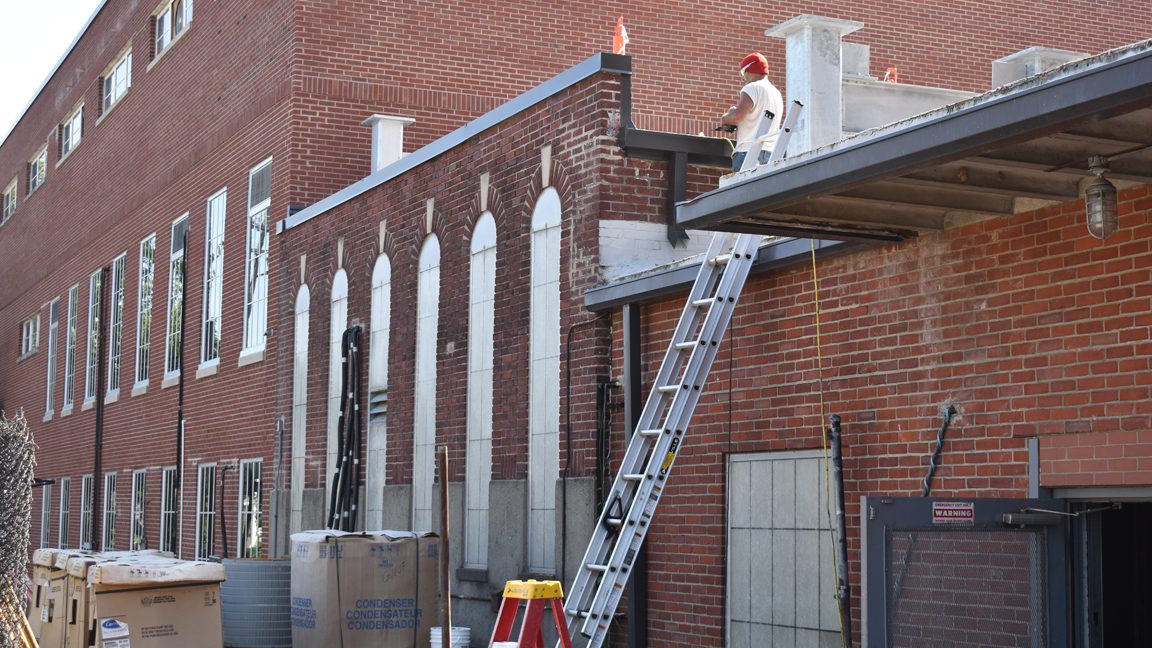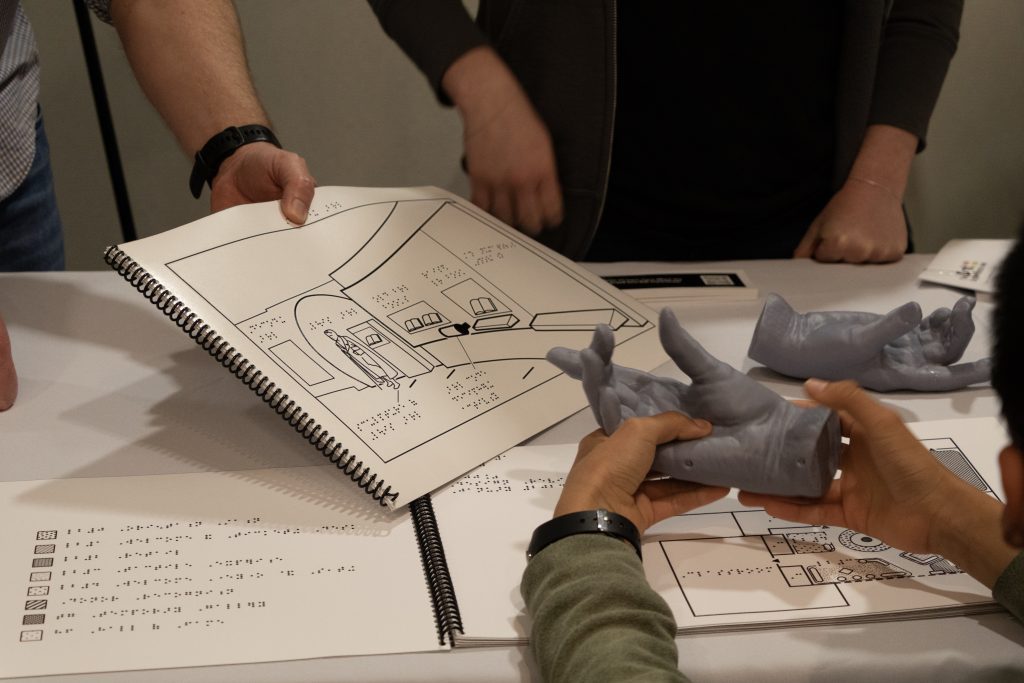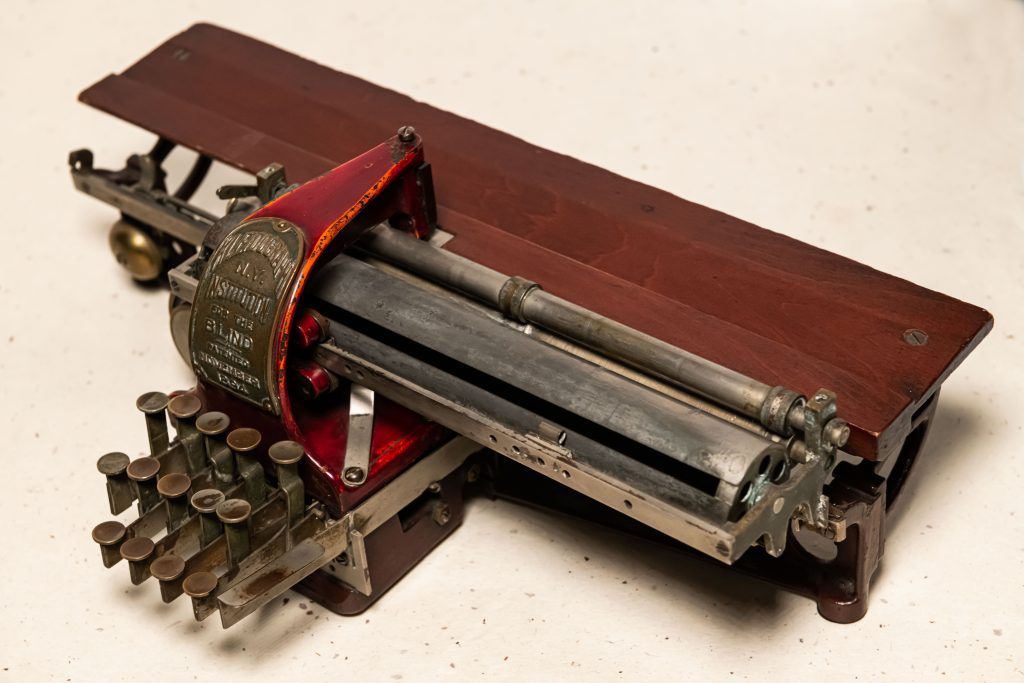Everything Old is New Again

I am reminded here at APH that everything old is constantly being made again new. (OK, if you’re wondering, yes, it’s from the Bible, 2 Corinthians. I looked it up.) Outside my office in the 1958 café building, I’ve been hearing the hammering and grinding of workers renovating the old 1935 fireproof plate storage vault. For almost 88 years, the building was used first to store metal embossing plates for creating braille textbooks and then later to store the print copies of textbooks used in the translation process. It had floor-to-ceiling metal racks and this nifty old cast iron spiral staircase that we used in a photo shoot on more than one occasion. In the back corner was an old feed mechanism important when the Printing House was in the vinyl record pressing business for Talking Books. All the windows of the building had been bricked up. In short, imagine a space that was cramped, dark, and, yes, scary.
In the plans for the renovated APH that will be finished in 2025, the plate storage vault is reimagined into a public gathering space for meetings and staff recreation, with the windows reinstalled and three huge skylights transforming it into one of the coolest spaces on our campus. And I’ve been watching that transformation in real time. It reminds me that every space in the building has served several functions during decades of long service. My office used to have a machine in it to tool tactile graphics. Right down the hall from me is the original 1883 building, which housed the original presses, one of our first recording studios, and later the stereographing department.
There are little clues scattered throughout the building that change and renewal are always and have always been critical to the APH story. A gaslight fixture from the 19th century protruding from a wall, an automatic fire door from the 1920s with its approval stamp from the Underwriter’s Laboratory. A curious ramp–that is more often a tripping hazard–which conceals three inches of sound dampening cork in the floor. The building and how its spaces are defined and equipped change, change, and change again as each new generation of products and services must be accommodated. We do not erase our past by making changes. Each update is a celebration of everything that has gone before. And boy are we celebrating!
One of our facilities guys just brought me an old wood table. It was buried somewhere upstairs in Advancement. Generations of fundraising staff have come and gone and never given that old table a second glance. At some point in its past, somebody thought it was a good idea to remove its original oak top and replace it with a “modern and efficient” cream and gold 1960s era laminate top. But I still recognize it. It’s one of the original recording studio tables from back in the 1930s. A little wax, and its going to be good as new. I think it will look great… yeah, over there.
Share this article.
Related articles

Defining The Dot Experience: Everything You Need to Know
What is The Dot Experience? The Dot Experience is APH’s re-imagined museum set to open in 2026. Designed with an...

Blindness History Basics: History of Braille Writers
When fifteen-year-old Louis Braille presented his tactile system of raised dots in 1824, he hoped the new system would provide a...

Please Touch! Making Museum Collections Accessible
What do you think of when you hear the words “museum collection?” Artifacts like objects, paintings, photographs, rare books, or...
